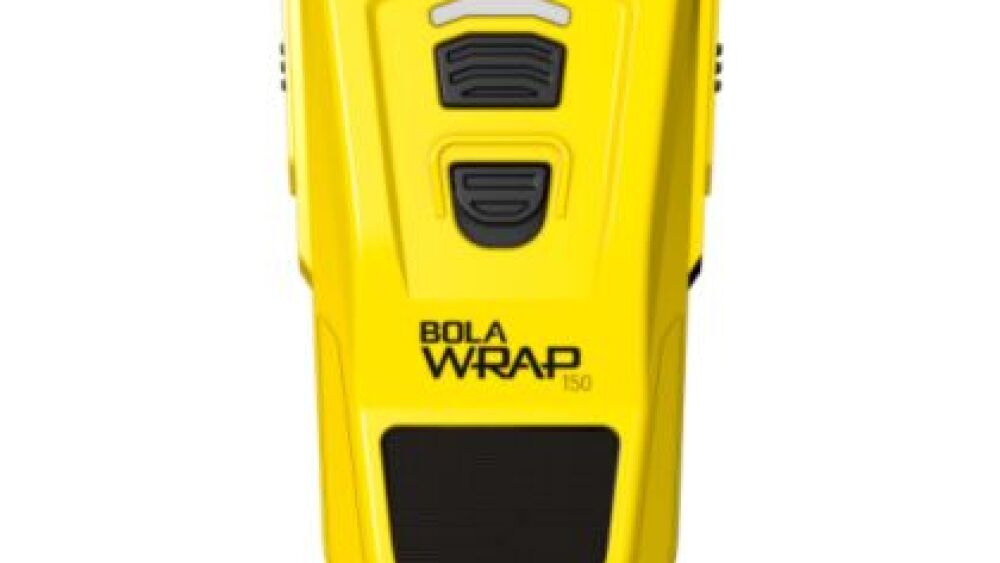By Police1 Staff
You’ve probably heard of the BolaWrap, a handheld device designed to restrain noncompliant subjects from a distance by launching a Kevlar cord that wraps around a person’s arms or legs.
The BolaWrap has been used in over 600 agencies in the United States and has been credited in resolving law enforcement calls without injury in over 100 incidents.
Despite being relatively new to the market, the tool has garnered considerable attention for its “Batman-like” technology. That attention has also created some misconceptions about the device. Is the BolaWrap meant to replace other law enforcement tools? What does a successful deployment look like?
Here are five myths and truths about the BolaWrap all law enforcement officers should know.
Myth 1: The BolaWrap only generates compliance through a “perfect” wrap.
Fact: Successful use of the BolaWrap isn’t limited to instances when the Kevlar cord fully wraps around the arms or legs of the subject; in fact, de-escalation has occurred without the cord ever having been deployed.
There are multiple ways a BolaWrap device generates compliance:
- Showing the device: The mere sight of a BolaWrap or its multi-dot laser can cause a subject to de-escalate, as evidenced in the video below.
- Deploying the device: A range of deployment outcomes, from contact with the cord to a partial wrap to simply hearing the loud sound emitted by the device upon launch can result in a subject complying with an officer.
- Restraining the subject: Lastly, the complete wrapping of a subject’s arms or legs via deployment of a BolaWrap cord will restrain them and allow officers to close the distance, safely taking the individual into custody.
Myth 2: The BolaWrap is a weapon.
Fact: The BolaWrap is not a weapon. It is a non-pain compliance device that launches a 7.5-foot Kevlar cord from a range of 10-25 feet and is reloadable in 2-6 seconds. When used properly, the BolaWrap technology restrains an individual with very minimal risk of causing injury, and its integrated tether anchor safety caps make the risk of piercing the skin low. This humane restraint tool is designed for peaceful resolution of encounters with subjects.
Myth 3: The BolaWrap is a replacement for other tools on an officer’s toolbelt.
Fact: The BolaWrap is not intended to replace other tools on an officer’s toolbelt, but creates a new avenue of resolution between verbal commands and pain compliance tools. It is particularly well-suited to non-life-threatening calls that involve mental health crises, intoxicated subjects, or other instances in which a non-assaultive contact isn’t complying. In fact, the BolaWrap can be used in conjunction with other law enforcement tools. The key intention behind the BolaWrap is to present officers with a new force avoidance option within the Use of Force Continuum.
Modern policing is arguably the most complex it’s ever been, with officers serving in an ever-expanding variety of roles, each of which presents their own challenges. When every call is unique, why wouldn’t LEOs want the widest variety of options available to help them effectively respond? The BolaWrap adds another option to the toolbelt.
Myth 4: An officer needs to be close to a subject to use the BolaWrap.
Fact: The BolaWrap increases the safe distance between officers and subjects, working to restrain an individual from a range of 10 to 25 feet away. In a UK report, it was rated as having the lowest risk of potential injury to officers during interventions with subjects because the technology increases distance. In that same report, when looking at the risk of injury to the subject, it was rated as “safer than handcuffs” on the Use of Force Continuum.
Myth 5: Community buy-in may be challenging.
Fact: Given that it is designed for de-escalation, the BolaWrap should not be a hard sell for members of the public in your jurisdiction. As always, education and transparency are key. Through live demonstrations, media outreach, or initiatives like citizen academies, community members can learn what the technology can do, and officers can dispel any misconceptions about the tool. The BolaWrap presents a great opportunity to show the public your agency is looking for new ways to strengthen de-escalation tactics and improve community safety.
To learn more about the BolaWrap and request a demo, visit the Wrap Technologies website.


